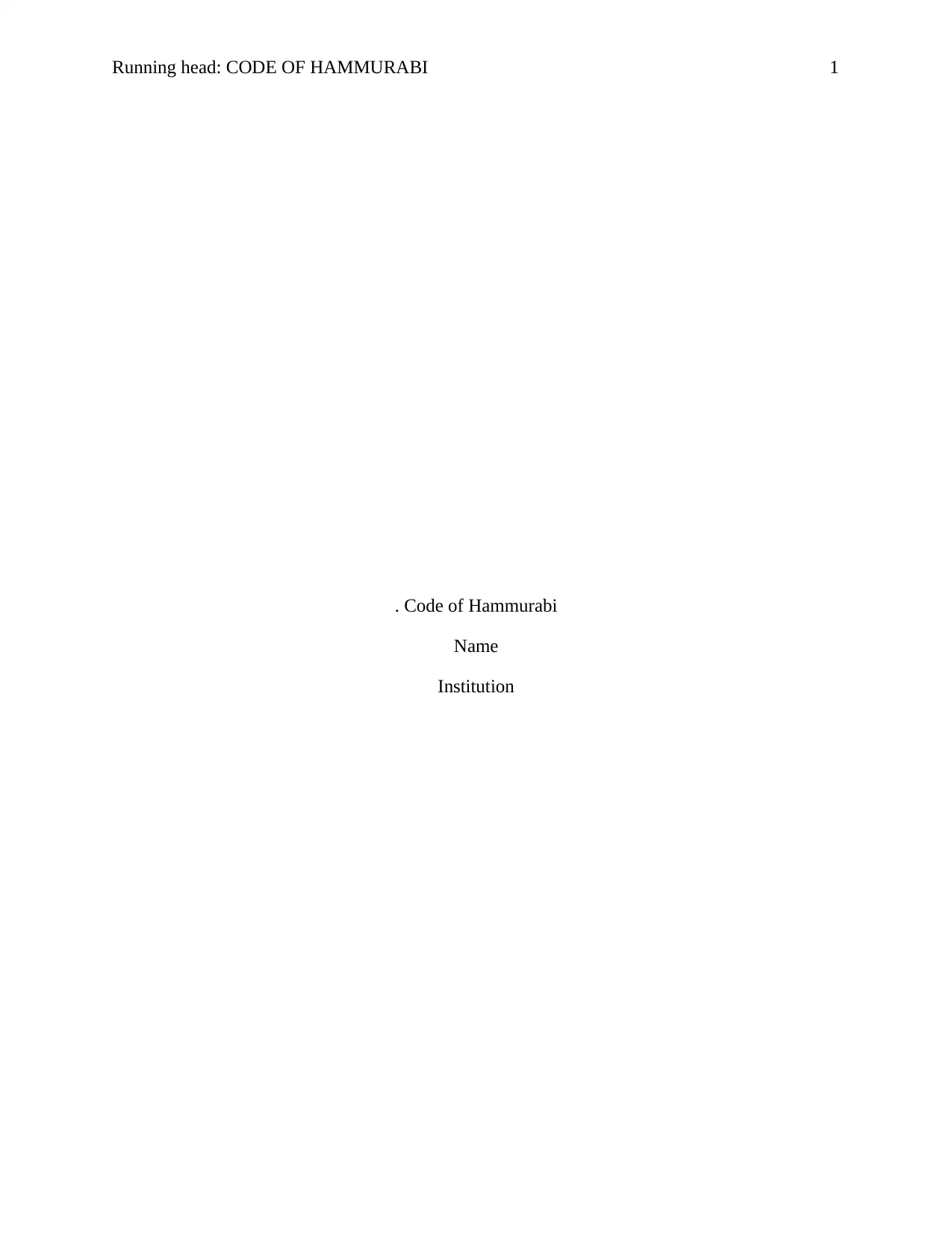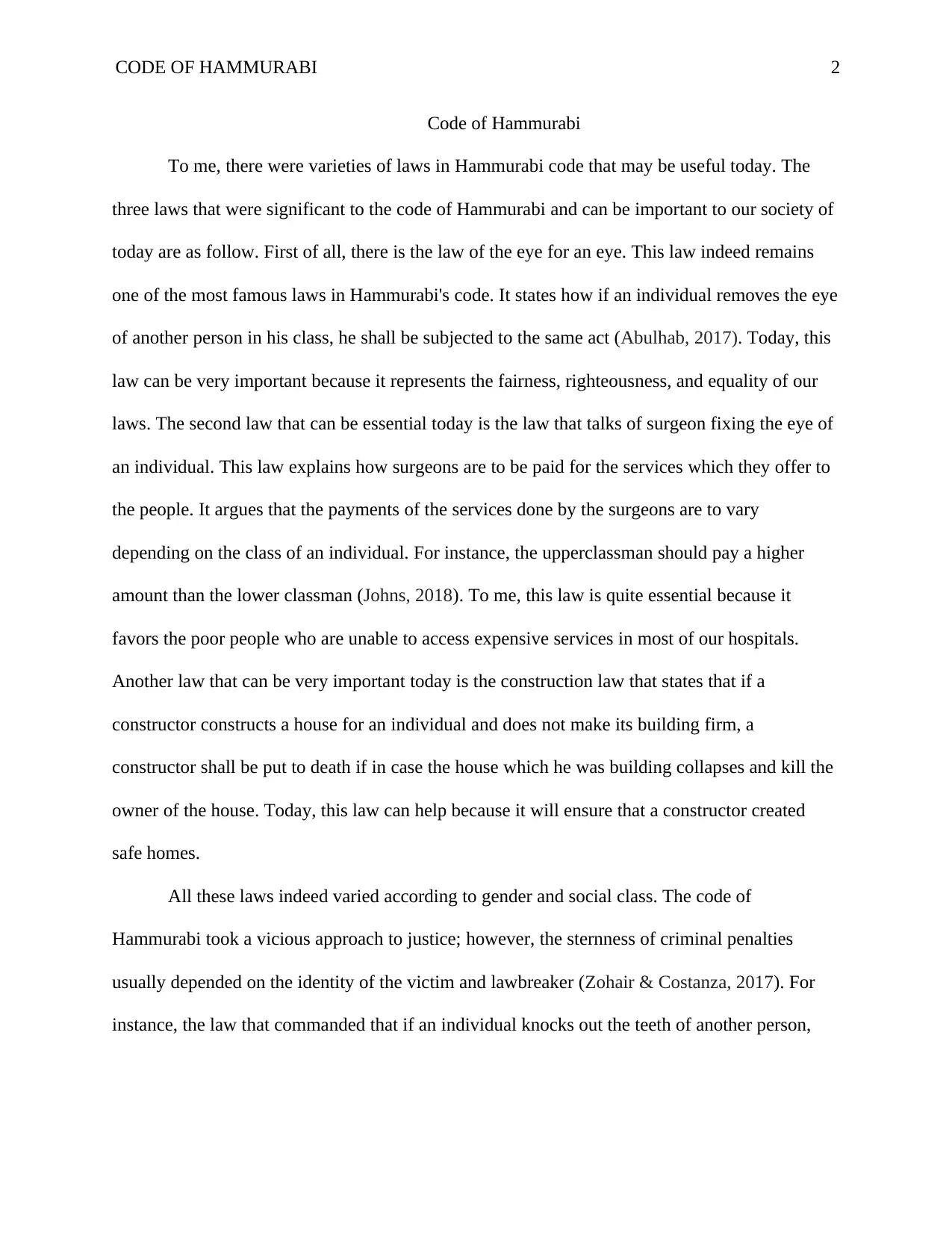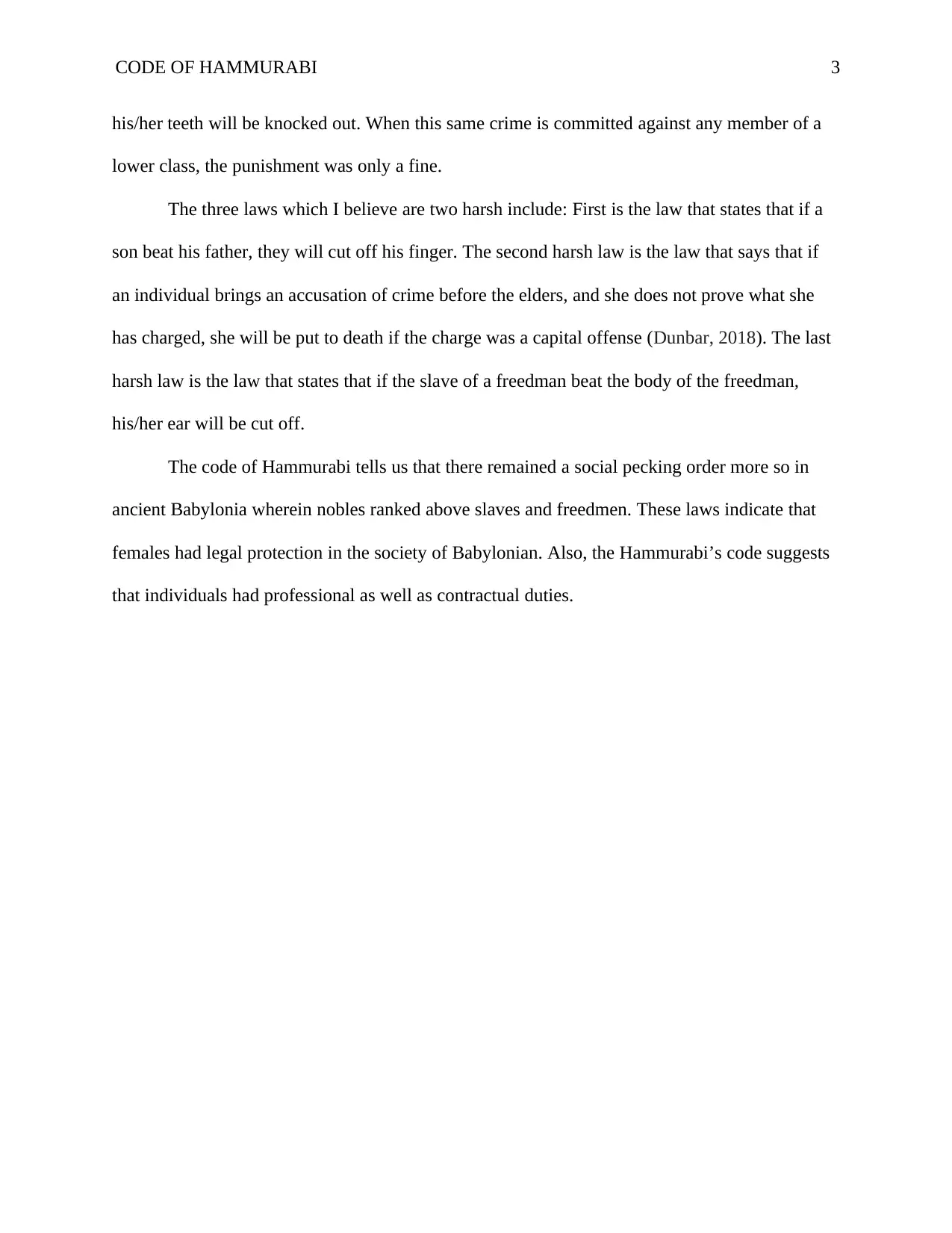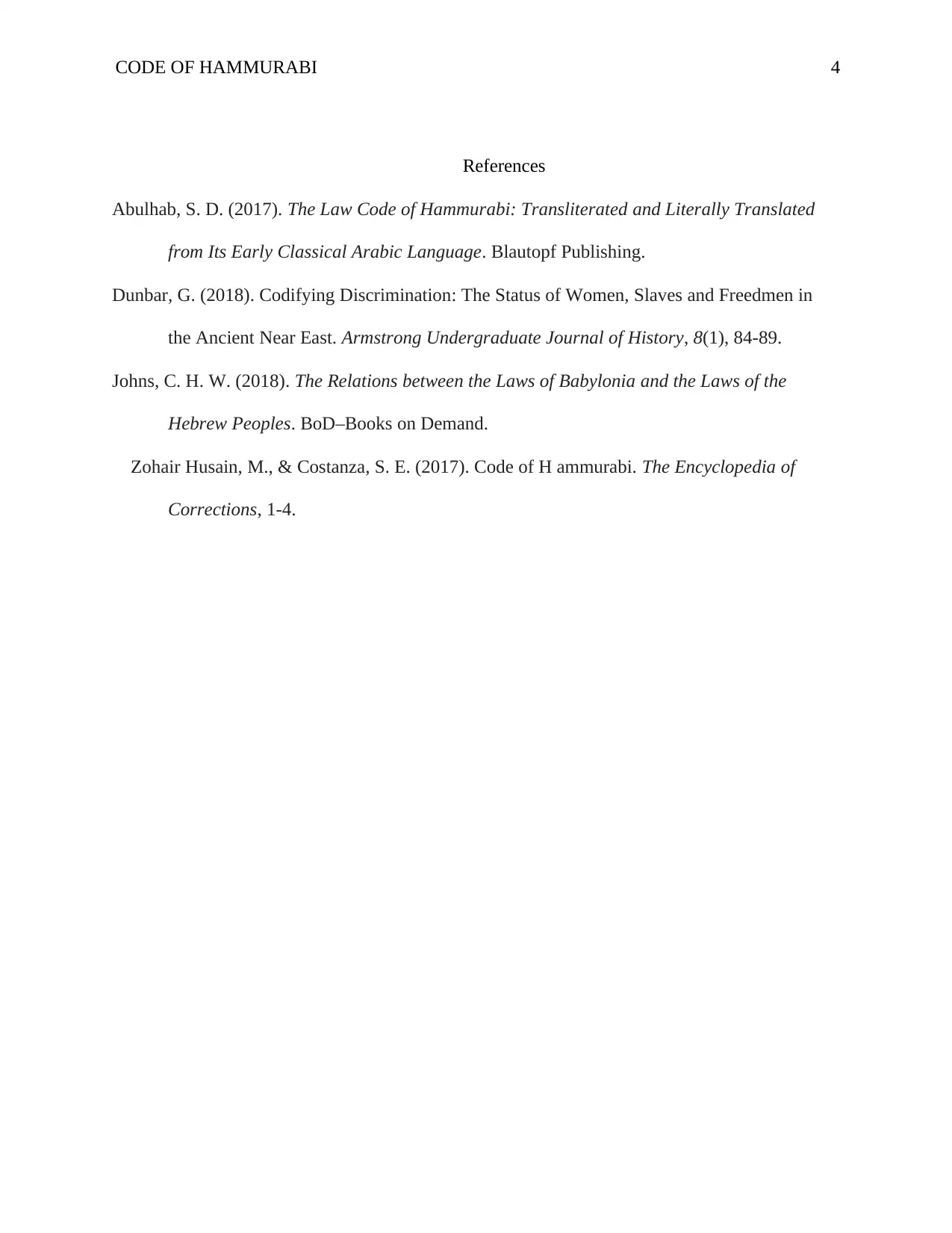A Deep Dive into the Code of Hammurabi: Laws, Justice, and Society
VerifiedAdded on 2022/08/20
|4
|714
|13
Essay
AI Summary
This essay provides an analysis of the Code of Hammurabi, examining its laws and their potential relevance to contemporary society. The author focuses on three key laws: the "eye for an eye" principle, the regulation of surgeon's fees based on social class, and construction laws ensuring building safety. The essay discusses the significance of these laws in terms of fairness, righteousness, and social equality, while also acknowledging the code's harsh punishments, which often varied based on the victim's and offender's social status. Furthermore, it highlights specific laws considered particularly severe and reflects on the social hierarchy of ancient Babylonia, including the legal protections afforded to women and the professional and contractual obligations of individuals. The essay concludes by emphasizing the code's impact on understanding ancient legal systems and their influence on modern concepts of justice.
1 out of 4




![[object Object]](/_next/static/media/star-bottom.7253800d.svg)